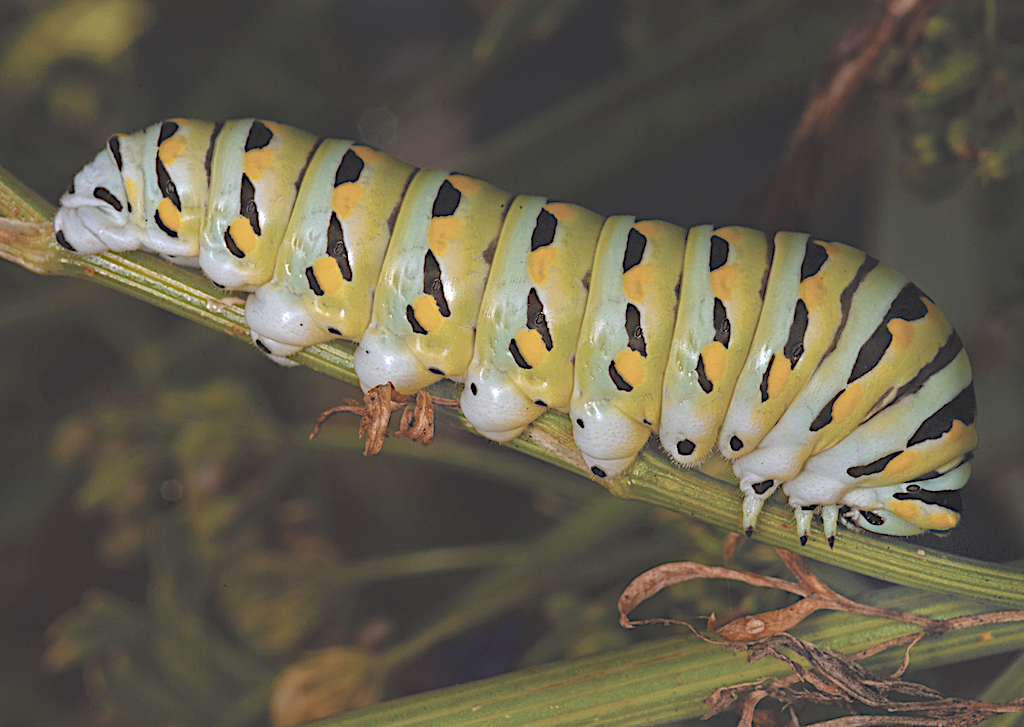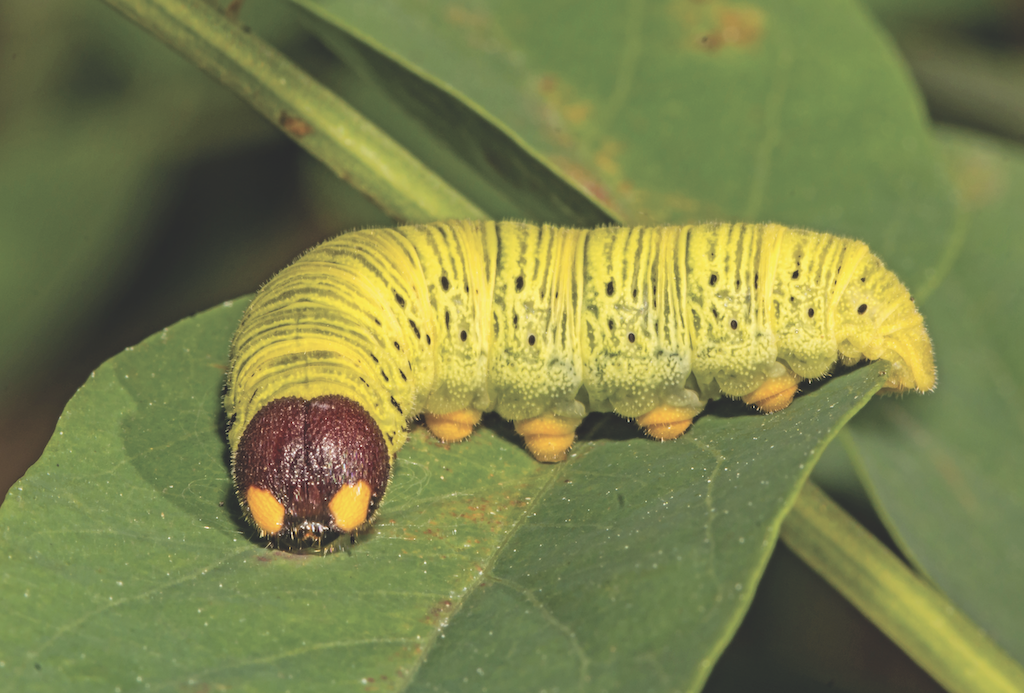
Get to Know Your Caterpillars

How many times have you seen a caterpillar and wondered, “What in the world is that?” Caterpillars of North America by Jaret Daniels provides an easy-and-fun way to identify them. It features more than 90 of the most common, widespread, and readily observable caterpillars in North America. Whether you’re exploring a wilderness area, nearby park, vacant lot, or even your own backyard, this guide has you covered.
With its great diversity of climates, ecosystems, and plant communities, North America supports a tremendous diversity of insects. Within this mix are over 14,000 different species of butterflies and moths, the immature stages of which are commonly called caterpillars. They are familiar and beloved representatives of the natural world.
But the caterpillar stage is only one phase of the lives of butterflies and moths. All butterflies and moths share the same four-stage life cycle: egg, larvae, pupa, adult.

Adult butterflies and moths lay eggs, which hatch into larvae, also known as caterpillars. After molting several times during development—each individual stage between molts is known as an instar—the caterpillar forms a pupa, where it undergoes metamorphosis, the process of transitioning from a caterpillar to an adult. A butterfly pupa is called a chrysalis, and moths often surround their pupa with
a cocoon.

Did you know that nearly all caterpillars are herbivores, and they collectively represent one of the most diverse groups of plant-feeding animals on Earth? Most caterpillars are specialists and have adapted to depend on a limited number of native plant species as hosts. In fact, native plants support many more caterpillars than introduced, non-native plants. While there are, of course, exceptions, growing native plants is a great way to help attract and provide needed resources for these wonderful creatures.

The metamorphosis from caterpillar to butterfly or moth is one of nature’s most amazing wonders. While their transformations into winged pollinators tend to get much attention, caterpillars are fascinating and beautiful themselves. Anyone who wants butterflies in their backyard or garden should hope for caterpillars too!

So get outside and start looking. You’ll be amazed at what you can find!
About the author: Jaret C. Daniels, Ph.D., is an Associate Professor of Entomology at the University of Florida and Director of the McGuire Center for Lepidoptera and Biodiversity at the Florida Museum of Natural History, specializing in insect ecology and conservation. He has authored numerous scientific papers, popular articles, and books on wildlife conservation, insects, butterflies, and wildflowers—including butterfly field guides for Florida, Georgia, the Carolinas, and the Midwest. He is also the author of Backyard Bugs, Insects & Bugs Backyard Workbook, Insects & Bugs for Kids, Our Love of Bees, Vibrant Butterflies, and more. Jaret lives in Gainesville, Florida, with his wife, Stephanie.
Caterpillars of North America will be available starting May 7th. Pre-order your copy now! For the latest news about all our books, sign up for our newsletter here. #bewellbeoutdoors


